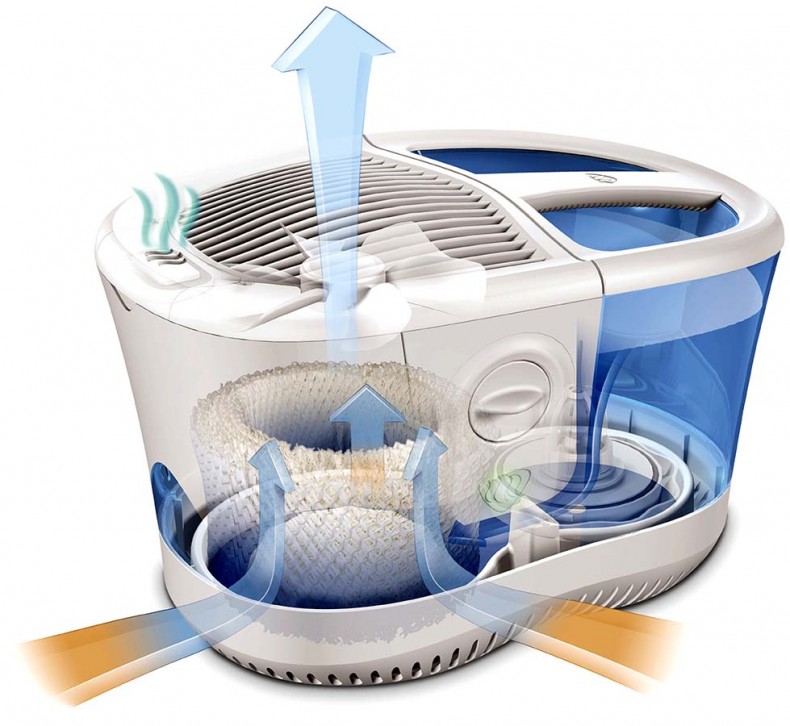Winter’s indoor air challenge
Efficient methods to improve air quality in your home
By James DulleyThe room air flows through a wet wick inside this evaporative humidifier to add moisture to the air.
Winter months can be challenging when it comes to indoor air quality. People often think their heat pump’s filter will take care of indoor air quality. It does help remove particles from the air, but only the ones that stay suspended.
Central heating systems with efficient variable-speed blowers, which run slower and longer, will improve air quality.
Particles in the air are only one aspect of good air quality. The humidity level and other odorous and unhealthy chemicals also play a role. Just open the cabinet under your sink where you store cleaners, and you will realize the “soup” of stuff you breathe.
If you have a heat pump, and even though not all particles make it to the heat pump filter, try installing a high-quality pleated media filter. It will cost more than the 99 cent fiberglass one, but it is much more effective. This is particularly true for the smallest of particles. Make sure you change it regularly.Room-size electronic air cleaners are effective for removing those tiny particles that pop up when you plop down in a chair. They don’t use much electricity and are quiet, so using one in a bedroom at night can help improve air quality.
Although it sounds counterintuitive, vacuum cleaning often creates small particle concentrations. If it smells like you just vacuumed when you are done, it’s likely the fine particles are leaking out of the vacuum cleaner. Think about installing a central vacuum, which vents outdoors, or use a new portable vacuum with a HEPA (high-efficiency particulate air) exhaust filter.
Keep the indoor air properly humidified so you can set your heat pump thermostat lower by a few degrees and still be comfortable. A heat pump-mounted central humidifier works well during cold weather, but may not run long enough to adequately humidify during milder weather. Using several room humidifiers is effective, and ultrasonic and evaporative types are energy efficient. Typically, 30 to 50 percent relative humidity provides comfort and healthy indoor air.
During winter, the best way to reduce indoor chemical pollutants in the air is to use less of them. Try using natural cleaners that are vinegar- and citrus-based, and reduce the use of aerosols.
Bringing fresh air into the house is necessary. Opening several windows on a windy day can exhaust much stale, chemical-laden air and it only takes a couple of minutes to freshen the air.
Another option: have your HVAC contractor install a damper in the return duct. The damper is ducted through a filter and leads to outdoors. When running the bathroom fan or range hood, the negative pressure created will draw fresh air indoors. When there is no negative pressure, the damper stays closed.
The most efficient method to bring in filtered fresh air is a heat recovery ventilation system. The outgoing stale air transfers most of its heat (up to 80 percent) to the incoming cold fresh air, and vice versa during summer. Most models have their own duct system. Window models, similar to a window air conditioner, are effective for a single room.
-
Share this story:



